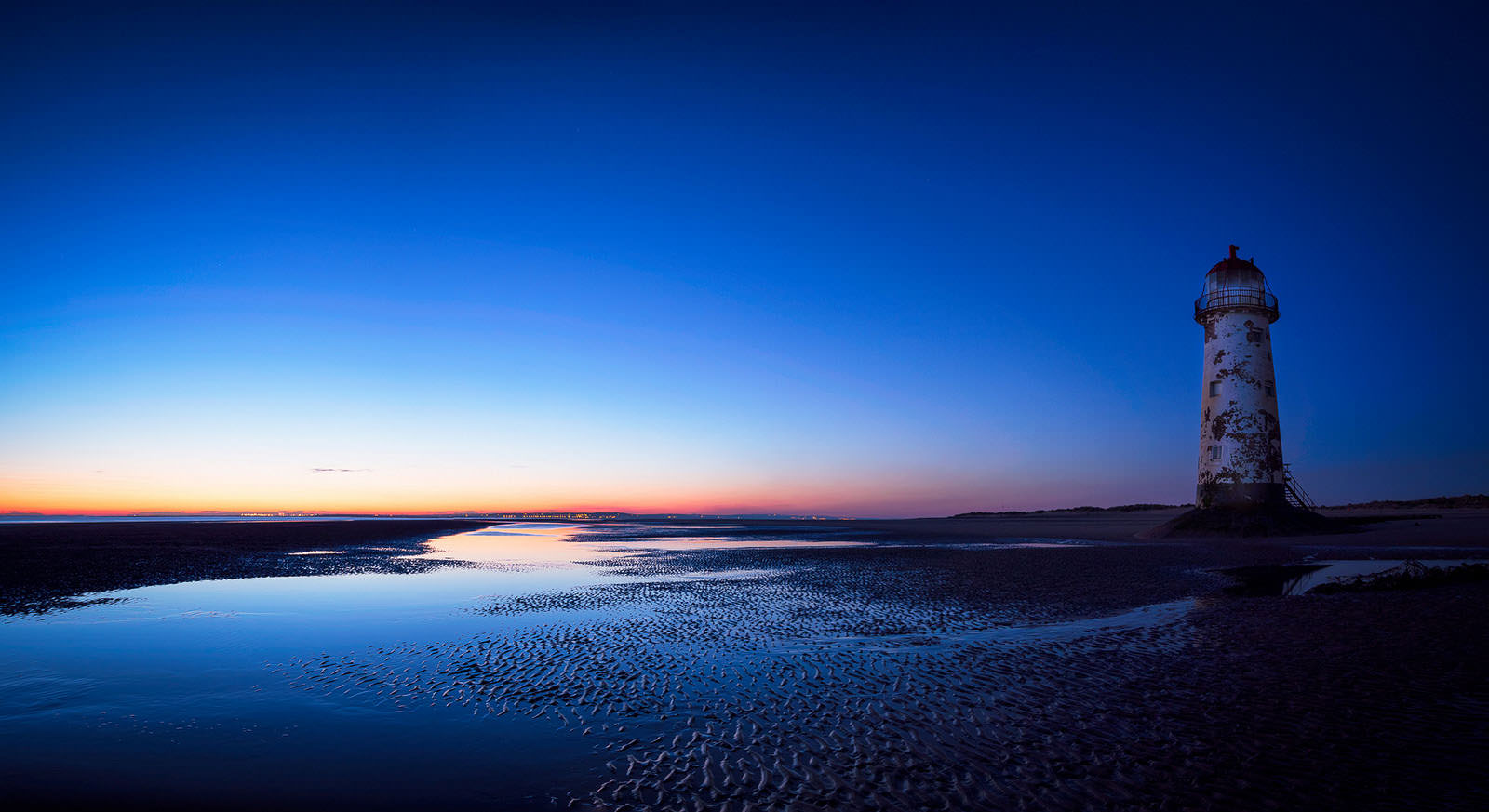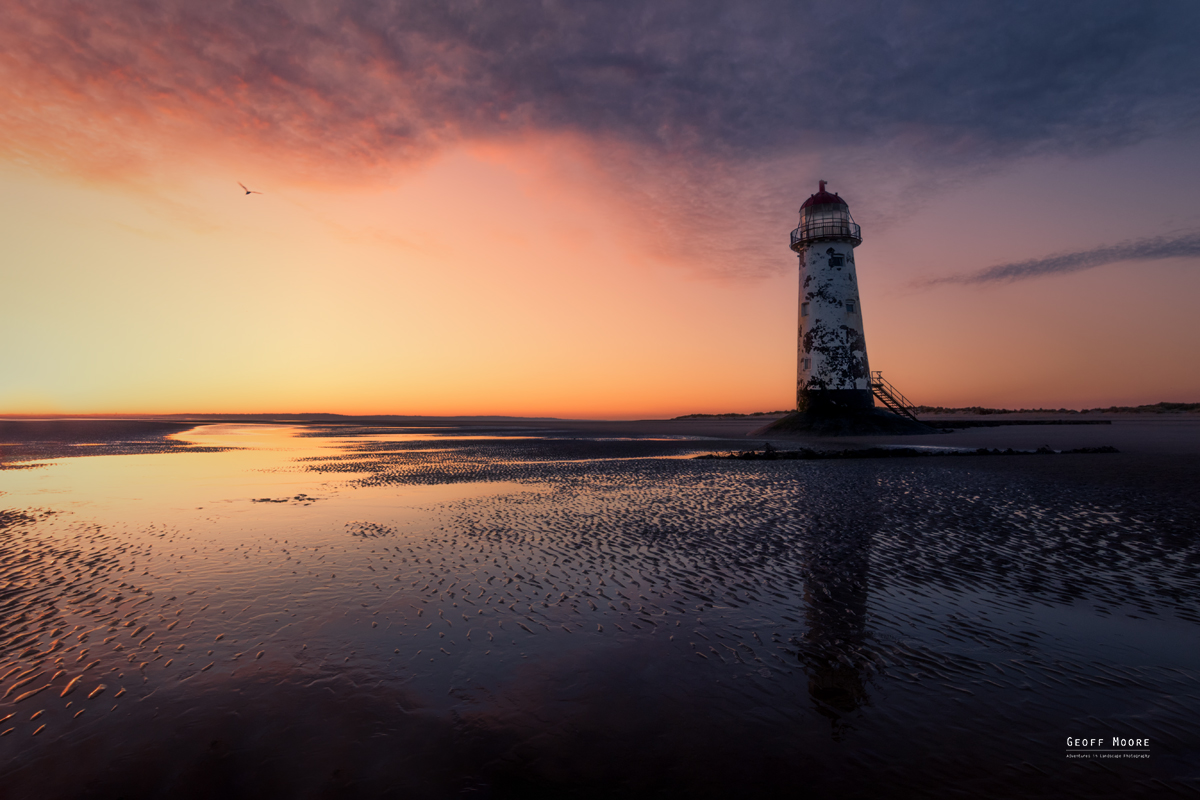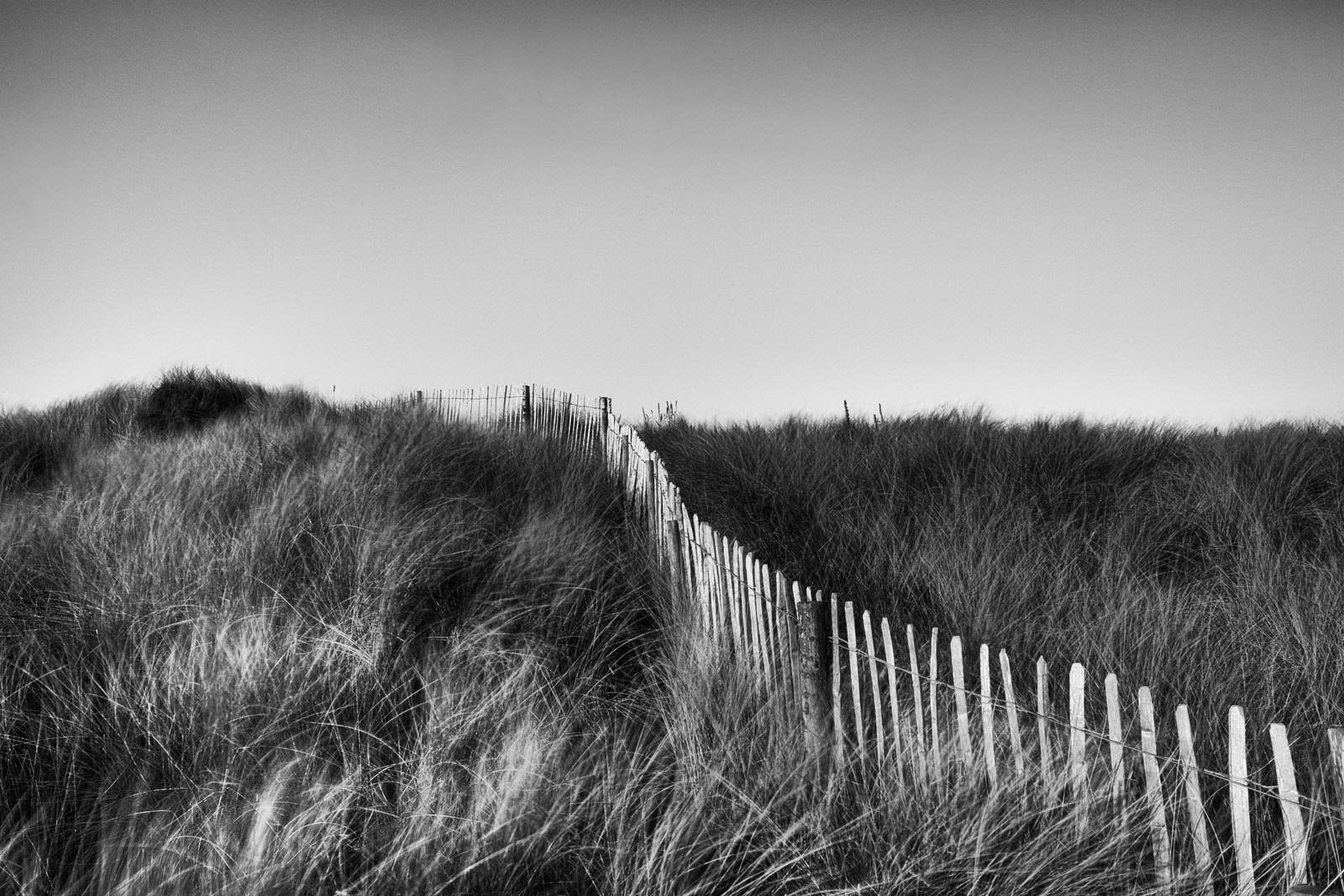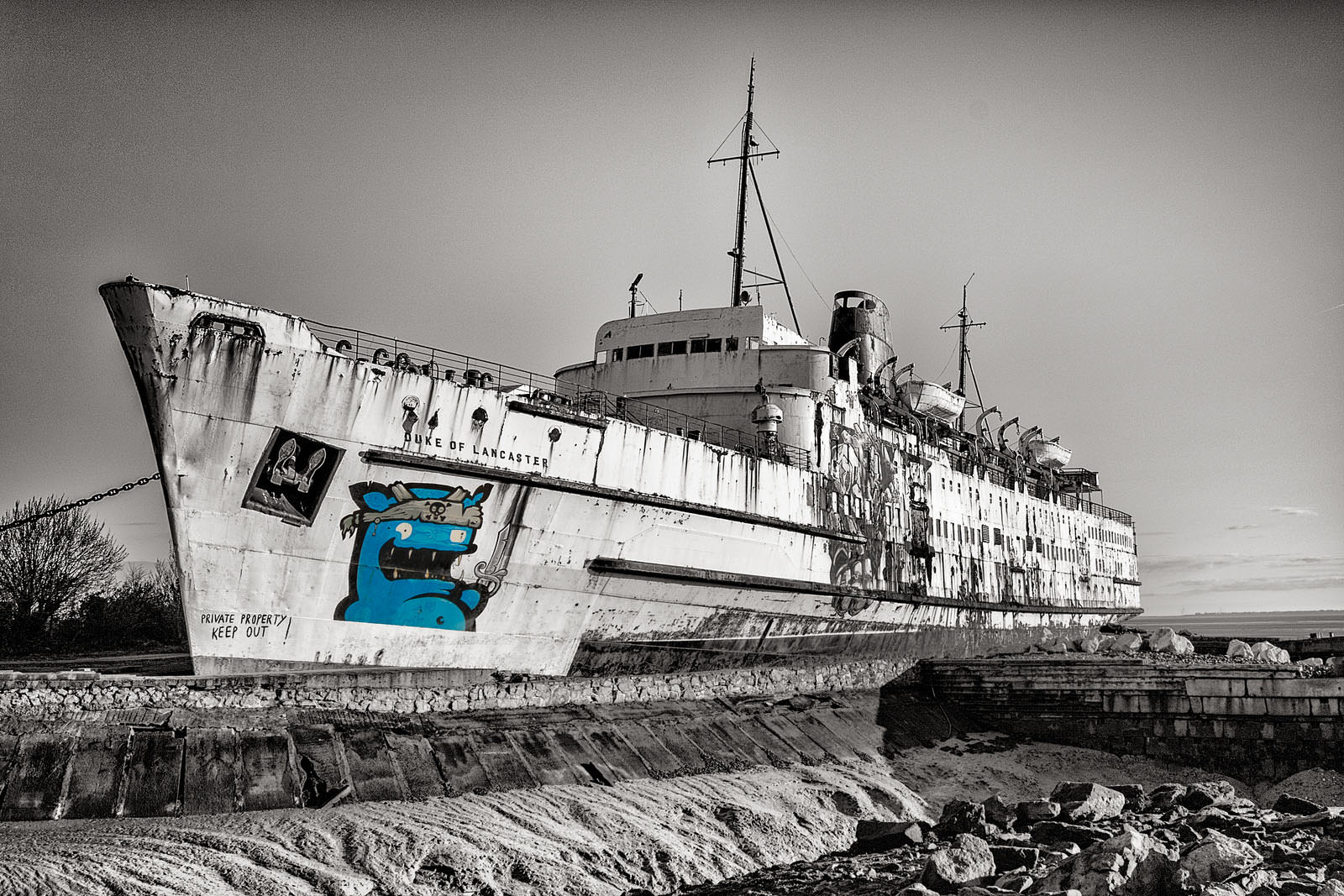- Point of Ayr Lighthouse
- Canon 7d Mark2 Camera used:
- Tokina 11-20mm UWA Lens used:
- 11mm Focal length:
- f/8.0 Aperture:
- 8" Exposure time:
- 100 ISO:
Talcre Beach - Flintshire
The Point of Ayr Lighthouse, also known as the Talacre Lighthouse, is a grade II listed building situated on the north coast of Wales, on the Point of Ayr, near the village of Talacre.
The lighthouse was built in 1776 by a Trust of the Major, Recorder and Aldermen of Chester to warn ships entering between the Dee and the Mersey Estuary. It was eventually fell into disuse and was decommissioned in 1884. It is now a privately owned residential property,
Costal sunrise photography adventure
Adventure number 6 saw Mark and I turn up at a moonlit beach of Talacre. Miles of golden sand backed by dunes met us as we parked up and walked in on foot from the nearby car park, our timing was perfect with our arrival at low tide, giving is access right down to the lighthouse. The full moon provided ample ambient light in which to navigate the sand dunes and down on to the beach, its quite surprising with no other ambient light just how much illumination the full moon provides on a clear night without the typical British clouds.
Beach photography tips & tricks
As with any beach adventure, the hazards of sea water and airborne sand are always present when undertaking photography, so it highly recommended to be a little more careful in where you are placing your tripod and or how or when you change lenses, if you should at all. If you find using a tripod on the beach a little tricky due to the legs sinking in to the sand, you might want to try taking 3x CD's with you. Simply place theses under the tripod feet and you will have a much more stable surface to photograph from.
This beach always has such wonderful textures in it and there is something very special about being near the sea at the dawning of a new day. The beach stretches for miles in both directions, and is a very popular holiday destination in the summer season, however in the late winter to early spring it is not unusual to have the entire beach to yourself in which to enjoy strolling along or just relaxing on and watching the sea.
Changing camera lenses on the beach
Changing camera lenses when on the beach should really be a last resort, if you need great reach, walk closer to the subject, if you need more distance then walk away, airborne sand and sea spray has a unique magical property of being able to get inside your camera even when you take all manageable precautions in preventing it. If however you do need to change lens you may want to try the following to reduce the chances of sand and water ingress.
- Place your camera bag in a safe and dry position, with easy access if using one hand.
- Also ways turn your back to the prevailing wind and spray.
- Place the camera and lens (where practical) under your jacket, jumper, hoody etc once the lens is removed, hold the exposed camera body against yourself.
- Keep the exposed end of the lens at 45° in the direction of the wind, and replace the lens cap.
- Take the next lens from your camera bag, limiting the time the bag is open, do not remove the lens cap until your in a position to reverse the above steps.
Cleaning: When you get chance and at the earliest opportunity, you should wipe, thoroughly with a damp cloth in clean lukewarm water & no detergent, wipe over all surfaces of your camera body and lens, repeat a couple of times, remember salt water is corrosive and a simple wipe down at the end of the shoot can save lots of money in repair bills and save the expensive coatings on your lens glass.

- Event Horizon
- Canon 7d Mark2 Camera used:
- Tokina 11-20mm UWA Lens used:
- 16mm Focal length:
- f/6.3 Aperture:
- 8 Exposure time:
- 100 ISO:
Paranormal activity
There is a history of paranormal activity being recorded in and around Talacre Lighthouse. One incident noted by Wales Online involved the reported sighting of a person dressed in old fashioned worth clothes standing on the balcony of the lighthouse itself. There were also reports of footprints in the sand leading to the building. Psychics visiting the site on a separate occasion reported contact with a spirit called Raymond who was once a lighthouse man before dying of a fever.
WW2 History
Talacre was used by the military during the Second World War, as an aircraft firing range. Fighters flew over the remote village every day, shooting at wooden targets in the dunes and at drogues towed by aircraft. It was also used for testing new devices, such as 'window' the anti-radar foil that, on occasion, covered the whole village with silver.
Sand Dunes develop where windblown sand becomes trapped by specialised dune-building grasses such as marram grass. From windswept ridges to damp hollows (slacks), the range of conditions supports a surprisingly rich variety of wildlife. Sand dunes are consequently of exceptionally high nature conservation interest. The shape, size and position of the dunes may change depending on local wind and wave conditions. Dune stability, acidity and local hydrological conditions are all key factors in determining wildlife diversity.
The village is often used as part of Paul O'Grady's comedy act, telling stories of how he spent many summers "Stuck in a four berth caravan in Talacre", and is therefore now part of popular culture as a famous "typically British" seaside holiday resort.
Other things to photograph nearby
The TSS Duke of Lancaster is a railway steamer passenger ship that operated in Europe from 1956 to 1979, and is currently beached near Mostyn Docks, on the River Dee, north-east Wales.

- Talacre Sunrise
- Canon 7d Mark2 Camera used:
- Tokina 11-20mm UWA Lens used:
- 14mm Focal length:
- f/11 Aperture:
- 1/45 Exposure time:
- 100 ISO:
Other Images from this adventure
How to get here
Enter your starting location on the box provided under the map to see the route from your starting location to Talcre Lighthouse, UK
Recent Photography Adventures
Why not read about some of my other photography adventures around the UK




Leave a comment